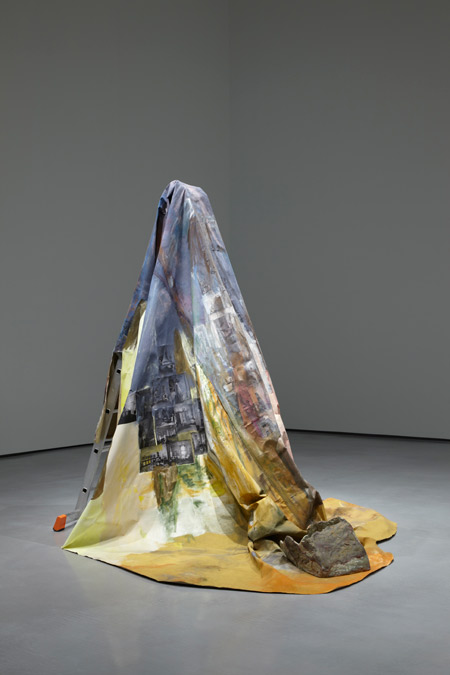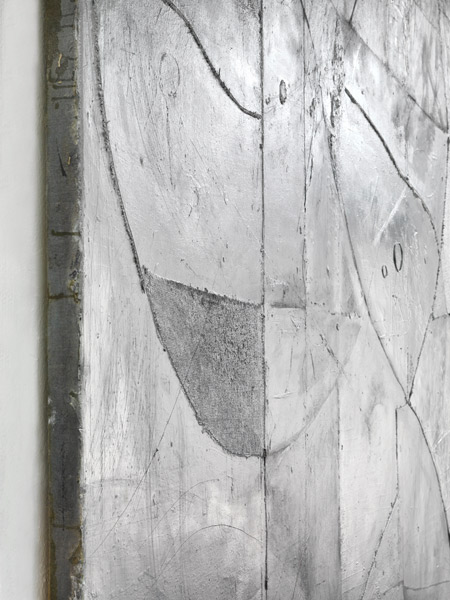William Kherbek talks to the London gallery’s founder and director of exhibitions about their Frieze display

As part of Port’s coverage of Frieze 2013, William Kherbek spoke to Timothy Taylor, the owner and founder of the gallery, and Emma Dexter, the gallery’s Director of Exhibitions. Timothy Taylor Gallery is known as one of London’s premiere contemporary art venues, exhibiting work by artists including Bridget Riley, Fiona Rae, Hans Hartung, Diane Arbus, and Sean Scully.
William Kherbek: Could you tell us a little about what Timothy Taylor Gallery has planned for Frieze this year? Are there particular narratives or artists you’ll be bringing to the fore?
Timothy Taylor: Our stand at Frieze London 2013 is for the most part curated around the themes of abstraction and collage, and the idea of texture – with works by Volker Hüller, Robert Rauschenberg, Jessica Jackson Hutchins and the late Spanish artist Antoni Tàpies – and conceptual approaches to craft making, as demonstrated in the work of Kiki Smith.
William: Does your approach to Frieze Masters differ considerably from your approach to Frieze Art Fair?
Timothy: At Frieze Masters this year we have a solo presentation of works from the 70s by Sean Scully, exploring two critical shifts in his early career – his development from illusionistic abstraction in the early 1970s, to delicate and monochromatic minimalism, and finally the discovery of his mature style in the constructed, and richly coloured stripe paintings of the 1980s.
“You do have to have one or two pieces that have an attraction factor, or really sparkle,
but in the main, you just want to represent the artists to the best of your ability”
William: Could you tell us about the current Volker Hüller exhibition at the gallery – what first interested you in his work?
Emma Dexter: I first saw Volker’s work at a small satellite fair in Basel around 2007. The works he was doing were small-scale hand-coloured etchings, which he continues to do up to the present. I was originally drawn by a kind of darkness in the work, an almost threatening quality, which is very true to the materials. His work has always played with shifting between figuration and abstraction. The new works are very ambitious and this is possibly his most abstract show, though in the works there are always hints of figuration.
William: Having worked in a variety of institutions both public and private, Emma, I wonder if you could speak a little bit about the way you’ve approached championing younger or less well-known artists over your career, especially in the context of large institutions like the Tate Modern. Is there a difference between the way public and private institutions approach showing work by new artists?
Emma: It think it depends on the institution you’re talking about. I think, actually, the Tate – both sites – have become quite adventurous of late. If you look at the programme, there are a lot of artists, not all of them young, but who are not well known, who are given an amazing platform. My experience now is more like the ICA. It’s a smaller scale so you can really respond to things.
William: What’s the psychology of creating an “exhibition” for an art fair? I wondered in particular if the dynamic between viewer and art work is a major factor, as in a gallery context, a viewer might spend a long time with a given work, in a fair, perhaps its more necessary to ensure that the most eye catching works are on display?
Emma: I can only speak for myself and the gallery, but we just try to show the best works we can find. There are always issues with the amount of space you’re given. Sometimes it’s not very much space. We’ve gone all out to curate our stand, so it’s a variety of old and new, large and small. You do have to have one or two pieces that have an attraction factor, or really sparkle, but in the main, you just want to represent the artists to the best of your ability. On our stand this year there’s a work by Jessica Jackson Hutchins, a young artist, called ‘Berliner Haus’ which is a seven foot tall sculpture based on an A-frame ladder.

William: Are there any forthcoming projects at the gallery in the year ahead you’re particularly excited about?
Timothy: We have an exciting programme ahead for 2014: a solo show by Jessica Jackson Hutchins in January, which follows her fantastic inclusion in the Venice Biennale and her solo show at The Hepworth, Wakefield earlier this year; an Alex Katz solo show of his 80s and 90s paintings; and then in June-July, we will have our 8th solo show with Sean Scully. He has been making incredible new work and we plan to exhibit a monumental five-part work which will surprise his many fans.
Timothy Taylor Gallery is exhibiting at Frieze and the Volker Huller exhibition is currently running at the gallery on Carlos Place until 9 November




